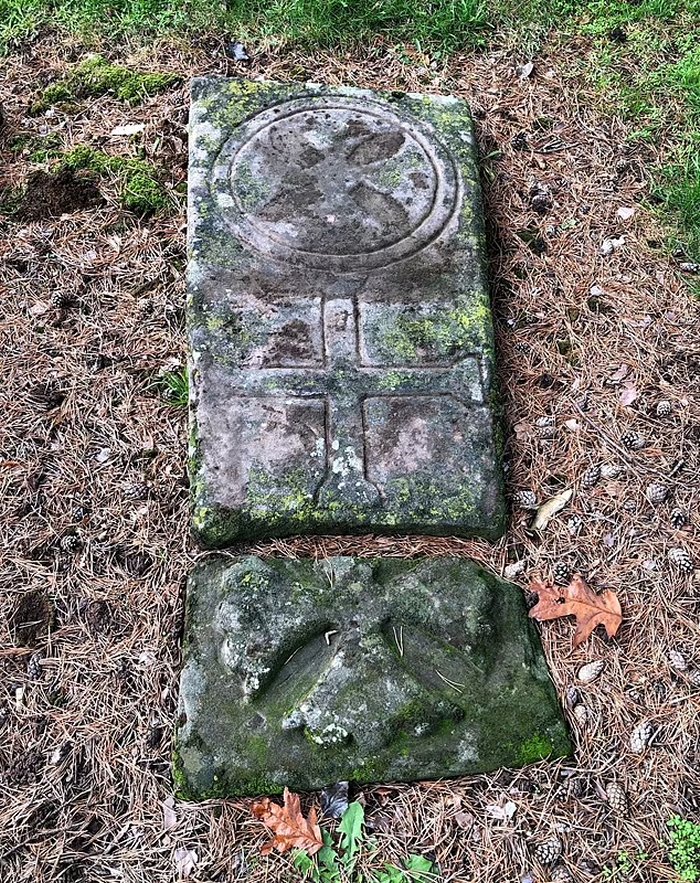Forgotten Graves Of The Knights Templar In Staffordshire Discovered By A Historian?
Jan Bartek - AncientPages.com - A historian says he has discovered several graves belonging to members of the Knights Templar at a village church in Staffordshire, UK. Historian Edward Spencer Dyas has been investigating the medieval tombs at St Mary’s Church in the village of Enville.
In 2021, he found three 800-year-old neglected graves belonging to members of the ancient order in the churchyard, and now he has discovered five more.
St. Mary's Church in Enville, Staffordshire. Credit: Google
Dyas thinks the graves can be identified as belonging to Knights Templar members due to the appearance of the clan's symbols on the headstones. He is also convinced many more graves belonging to members of the ancient order could be hidden around England.
Each of the graves uncovered by Dyas features a Templar cross within double circles in a standard Templar design. The historian thinks St Mary’s Church was 'under the patronage of the Templars' and was built thanks to Templar financing.
The Knights Templar was a powerful, wealthy Medieval organization that provided safety to protect pilgrims in the Holy Land in the 12th century.
As discussed previously on Ancient Pages, "their Order was one of the most potent monastic societies in Europe and the military pride of the church during the Crusades.
In 200 years, they created the most crucial Christian organization in the world. Most prominent medieval European monarchs, who considered themselves powerful, feared someone else even more powerful – the Knights Templar. They symbolized the holy fight of Christians against infidels and heretics." 1.
"At the beginning of the 14th century, the Knights Templar were accused of horrifying crimes, leading to their abrupt and dramatic suppression.
Many historians have tried to figure out whether the knights were really guilty of these crimes or simply framed by King Philip IV of France and Pope Clement V." 2
The Knights Templar were arrested, charged with heresy and and thrown in prison.
The discovery of so many graves has led Dyas to think St Mary's could be one of the most nationally important Templar churches in the United Kingdom. The church also has links to links to William Marshal, st Earl of Pembroke, who is considered the most famous Templar in history and is often dubbed “England’s greatest knight” of the Middle Ages.
Edward Spencer Dyas first discovered three 800-year-old medieval tombs belonging to members of the ancient order in the churchyard in 2021 and has now discovered five more graves. Credit: Bev Holder, Stourbridge News
"But there is a mystery of why a European Templar is buried at Enville and why they were secretly so prominent there.
Searching historical surveys of Staffordshire and Enville, we were fortunate to come across a series of drawings, dated 1820, of graves inside Enville church, drawn by one of the most renowned architects in England, John Chessell Buckler.
We are fortunate Buckler came to make these drawings. Without his efforts these Templar graves found inside Enville church would have been lost to us,” Dyas told the Telegraph.
Tony McMahon, a historian, author, and Templar expert, called it a 'major discovery' because there aren't many known Templar graves in existence.
The Knights Templar were disbanded by the pope in 1312. Credit: Maria - Adobe Stock
He thinks the relevance of the graves has remained unknown for around 500 years.
"It seems that these graves were recorded in the 16th century and then forgotten,' he told MailOnline.
"It's thanks to the enduring interest in this mysterious order of knights that they have been uncovered again.
It does beg the question – if Enville has revealed its Templar dead, how many more graves around England are lying under layers of clay?"
One of the graves at St Mary's Church identified as Templar by historian Edward Spencer Dyas. Credit: Edward Spencer Dyas
McMahon suggests St Mary's Church could have been one of hundreds of Templar churches in England, adding that members would have been buried with the order's sacred insignia on their tombstones.
Whether the graves found by Dyas belong to the Knights Templar or not remains an open question.
Helen Nicholson, Emerita Professor of medieval history at Cardiff University, said, 'a cross alone is not enough to show that a tomb was connected to the Templars'.
"Those are not necessarily Templar crosses," she told MailOnline, adding that the order had 'no standard design' for its insignia.
"The Templars did not use a distinctive cross – their crosses had four arms the same length, but otherwise varied."
Credit: Edward Spencer Dyas
Professor Nicholson also pointed to a lack of evidence that there were Templars at Enville.
Susie Hodge, historian and author of 'Secrets of the Knights Templar,' said these 'could be Templar graves.'
"Enville is an old village, and so is the church. There may have been other Templar buildings nearby [but] not enough research has been undertaken yet.
See also: More Archaeology News
Dr. Matteo Borrini, an archeologist at Liverpool Moores University, said further study of the graves could give more information about those buried and whether they were truly knights.
Regarding the possibility of finding a real Templar grave, historical records and analysis of the archeological evidence can give the final answer.
Written by Jan Bartek - AncientPages.com Staff Writer
Expand for references
























